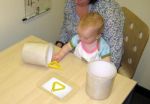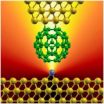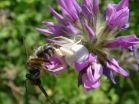(Press-News.org) Working memory—the ability to hold information in your mind, think about it, and use it to guide behavior—develops through childhood and adolescence, and is key for successful performance at school and work. Previous research with young children has documented socioeconomic disparities in performance on tasks of working memory. Now a new longitudinal study has found that differences in working memory that exist at age 10 persist through the end of adolescence. The study also found that parents' education—one common measure of socioeconomic status—is related to children's performance on tasks of working memory, and that neighborhood characteristics—another common measure of socioeconomic status—are not.
The study, conducted by researchers at the University of Pennsylvania, the Children's Hospital of Philadelphia, West Chester University, and the University of Pennsylvania School of Medicine, appears in the journal Child Development.
"Understanding the development of disparities in working memory has implications for education," according to Daniel A. Hackman, a postdoctoral scholar at the University of Pittsburgh who led the study when he was a graduate student at the University of Pennsylvania. "Persistent disparities are a potential source of differences in academic achievement as students age and as the demands of both school work and the social environment increase.
"Our findings highlight the potential value of programs that promote developing working memory early as a way to prevent disparities in achievement," Hackman continues. "The fact that parents' education predicts working memory suggests that parenting practices and home environments may be important for this aspect of cognitive development and as a fruitful area for intervention and prevention."
To look at the rate of change in working memory in relation to different measures of socioeconomic status, the researchers studied more than three hundred 10- through 13-year-olds from urban public and parochial schools over four years. The sample of children was racially, ethnically, and socioeconomically diverse. Each child completed a number of tasks of working memory across the four-year period. The researchers gathered information on how many years of education the parents of each child had completed, as well as on neighborhood characteristics, looking—for example—at the degree to which people in a child's neighborhood lived below the poverty line, were unemployed, or received public assistance.
Neither parents' education nor living in a disadvantaged neighborhood was found to be associated with the rate of growth in working memory across the four-year period. Lower parental education was found to be tied to differences in working memory that emerged by age 10 and continued through adolescence. However, neighborhood characteristics were not related to working memory performance.
The study suggests that disparities seen in adolescence and adulthood start earlier in childhood and that school doesn't close the gap in working memory for children ages 10 and above. Generally, children whose parents had fewer years of education don't catch up or fall further behind by the end of adolescence, when working memory performance reaches mature levels.
That said, the findings of this study do not suggest that working memory is not malleable. Interventions that strengthen working memory in children, such as training games, may help children with lower levels of working memory improve and reduce disparities.
INFORMATION:
The study was funded by the National Institute on Drug Abuse, the Eunice Kennedy Shriver National Institute of Child Health and Human Development, and the National Institute of Mental Health.
Summarized from Child Development, Mapping the Trajectory of Socioeconomic Disparity in Working Memory: Parental and Neighborhood Factors by Hackman, DA (currently at University of Pittsburgh, formerly at University of Pennsylvania), Betancourt, LM (The Children's Hospital of Philadelphia), Gallop, R (West Chester University), Romer, D (University of Pennsylvania), Brodsky, NL (The Children's Hospital of Philadelphia), Hurt, H (The Children's Hospital of Philadelphia and the University of Pennsylvania School of Medicine), and Farah, MJ (University of Pennsylvania). Copyright 2014 The Society for Research in Child Development, Inc. All rights reserved.
Working memory differs by parents' education; effects persist into adolescence
2014-04-30
ELSE PRESS RELEASES FROM THIS DATE:
Magnitude of quake scales with maturity of fault, suggests new study by German scientist
2014-04-30
SAN FRANCISCO -- The oldest sections of transform faults, such as the North Anatolian Fault Zone (NAFZ) and the San Andreas Fault, produce the largest earthquakes, putting important limits on the potential seismic hazard for less mature parts of fault zones, according to a new study to be presented today at the Seismological Society of America (SSA) 2014 Annual Meeting in Anchorage, Alaska. The finding suggests that maximum earthquake magnitude scales with the maturity of the fault.
Identifying the likely maximum magnitude for the NAFZ is critical for seismic hazard ...
Out of sight but not out of mind: Babies transfer learning from pictures to real objects by 9 months
2014-04-30
Babies begin to learn about the connection between pictures and real-life objects early on. A new study has found that by 9 months, babies can learn about an object from a picture of it and can transfer that learning to the real object when they come across it.
The study, by researchers at Royal Holloway, University of London and the University of South Carolina, appears in Child Development, the journal of the Society for Research in Child Development.
"The study should interest any parent or caregiver who has ever read a picture book with an infant," says Jeanne L. ...
Babies recognize real-life objects from pictures as early as 9 months
2014-04-30
Babies begin to learn about the connection between pictures and real objects by the time they are nine-months-old, according to a new study by scientists at Royal Holloway, University of London, and the University of South Carolina.
The research, published today in Child Development, found that babies can learn about a toy from a photograph of it well before their first birthday.
"The study should interest any parent or caregiver who has ever read a picture book with an infant," said Dr Jeanne Shinskey, from the Department of Psychology at Royal Holloway. "For parents ...
New health system scorecard shows little progress among states from 2007-2012
2014-04-30
New York, NY, April 30, 2014—States made little progress in improving health care access, quality, and outcomes and lowering costs in the five years preceding implementation of the major coverage provisions of the Affordable Care Act (2007-2012), according to the Commonwealth Fund's third state health system scorecard. The majority of states declined or failed to improve on two-thirds of the 34 scorecard indicators that could be tracked over time.
Wide gaps among states persisted since the last scorecard, with top states sometimes performing two to eight times better ...
Direct current, another option to improve the electrical power transmission
2014-04-30
Electricity is normally transmitted by means of alternating current, but it is not the only way and not always the best one.In some cases, high voltage direct current (HVDC) is used. In Spain, for example, there is only one direct current line, the one that connects mainland Spain with the Balearic Islands; all the remaining ones transmit electricity by means of alternating current.
In fact, "direct current continues to be highly suitable for underwater and underground lines," asserted Marene Larruskain, one of the engineers in the UPV/EHU's GISEL group. Furthermore "less ...
A small connection with big implications: Wiring up carbon-based electronics
2014-04-30
Carbon-based nanostructures such as nanotubes, graphene sheets, and nanoribbons are unique building blocks showing versatile nanomechanical and nanoelectronic properties. These materials which are ordered in the nanoscale, that is, in the dimension of a millionth of millimetre, are promising candidates to envision applications in nanoscale devices, ranging from energy conversion to nano-electronic transistors. A good connection between carbon-based materials and external metallic leads is of major importance in nanodevice performance, an aspect where an important step has ...
Like puzzle pieces, 3-D genomics holds a key to classifying human diseases
2014-04-30
To solve a puzzle, you need to recognize shapes, patterns and a particular kind of order. In much the same way, researchers at McGill University have discovered that the 3D shape of a leukemia cell's genome holds a key to solving the puzzle of human diseases. The researchers report their findings in the open access journal Genome Biology.
McGill professor Josée Dostie, a researcher in the Faculty of Medicine in the department of Biochemistry, focused on the shape made by the region spanning the Homeobox A (HOXA) genes in human cells -- a set of 11 genes encoding proteins ...
Safe(bee) in numbers
2014-04-30
Bumblebees can distinguish between safe and dangerous environments, and are attracted to land on flowers popular with other bees when exposed to perilous situations, according to new research from Queen Mary University of London.
The study published in the journal Proceedings of the Royal Society B, shows that past experience of predation causes bumblebees to join other bees already safely feeding on flowers.
Co-author and PhD student Erika Dawson said: "Our experiment shows for the first time that when bees find themselves in these predator-infested environments ...
Molecular networks provide insights for computer security, Carnegie Mellon finds
2014-04-30
PITTSBURGH—The robust defenses that yeast cells have evolved to protect themselves from environmental threats hold lessons that can be used to design computer networks and analyze how secure they are, say computer scientists at Carnegie Mellon University.
Environmental "noise" is a key evolutionary pressure that shapes the interconnections within cells, as well as those of neural networks and bacterial/ecological networks, they observe in a paper to be published online April 30 by the Journal of the Royal Society Interface. The researchers factored this into an established ...
Bigger is not always better, but it helps, says new research on beetles
2014-04-30
Researchers at the University of Exeter have found that the probability of a burying beetle winning fights, for the small animal carcasses it needs, depends on a combination of early life experiences and the competition it faces as an adult.
These beetles use small dead animals, such as mice and songbirds, to provide food for their young and competition for a carcass can be fierce.
Previous work has found that success in such contests depends on how good your early adult life environment was, not just how big you are. However, in many animals food availability can ...




